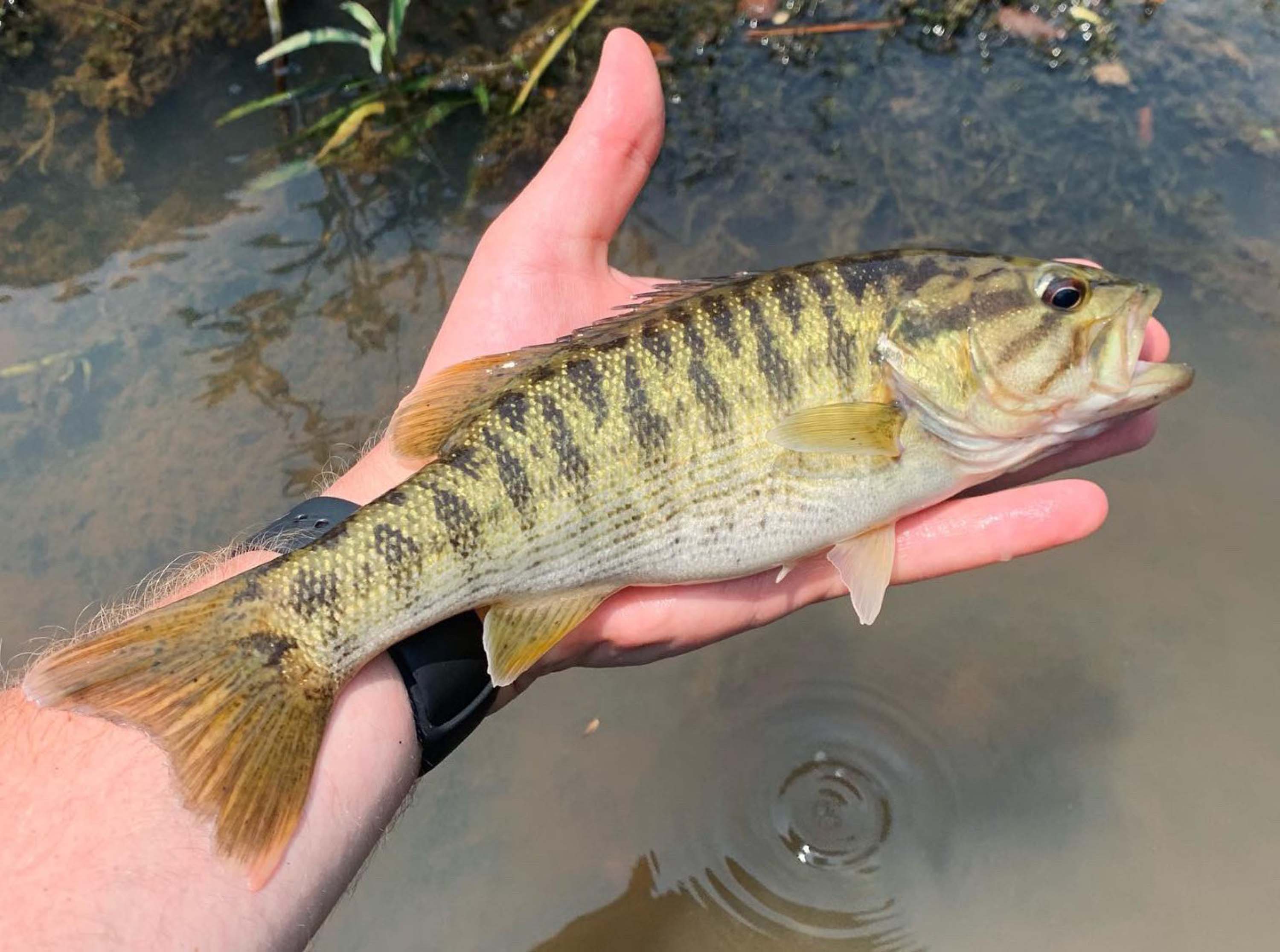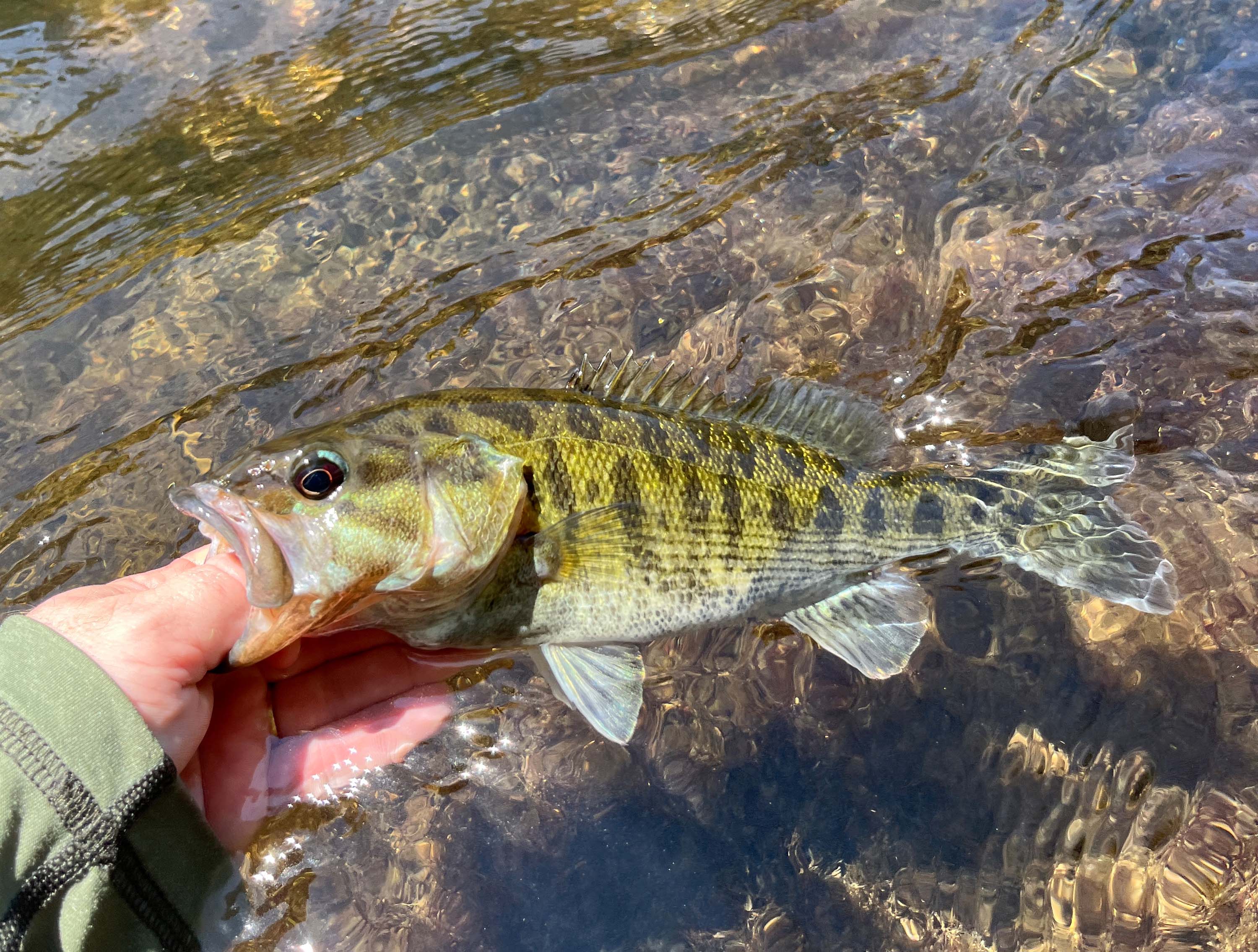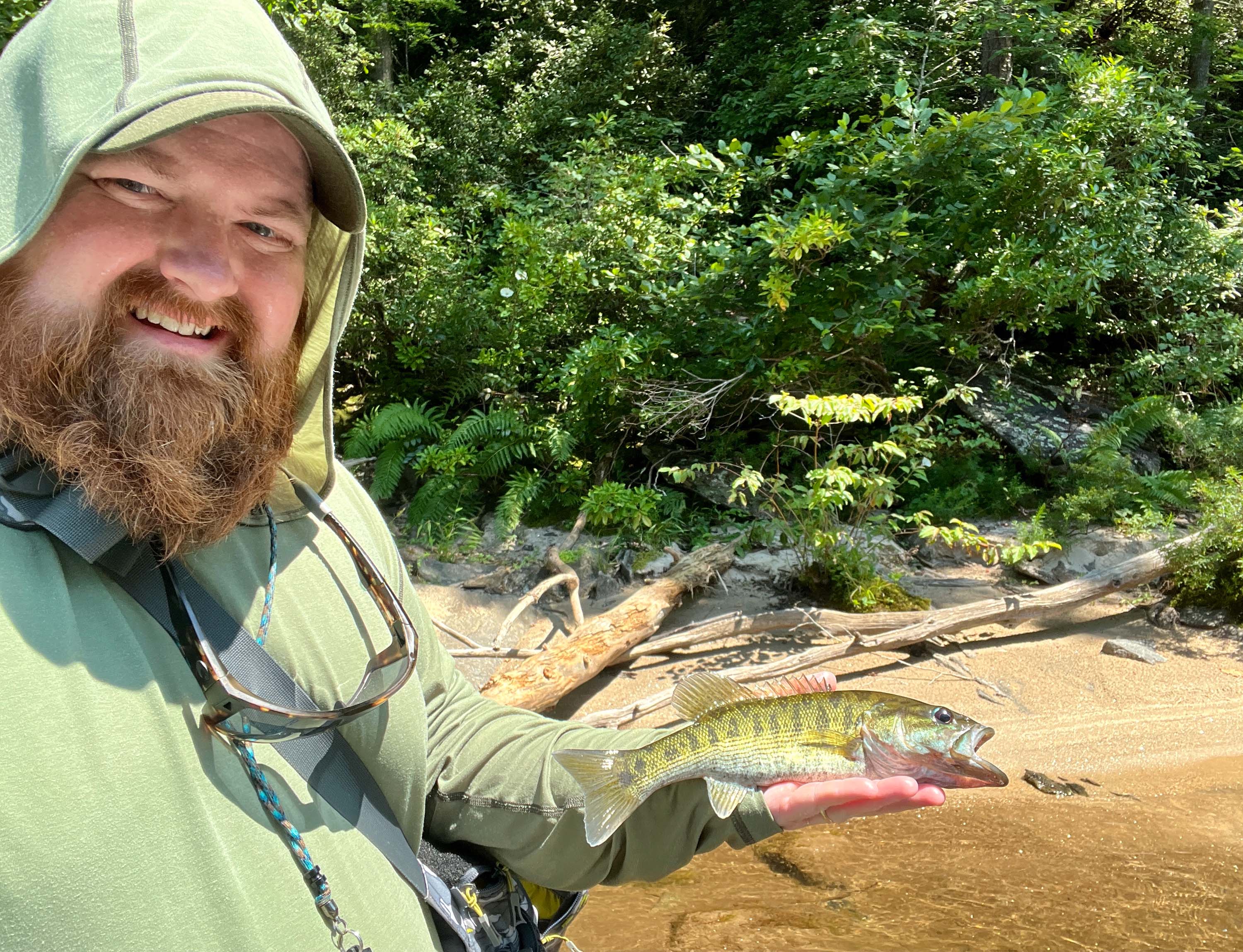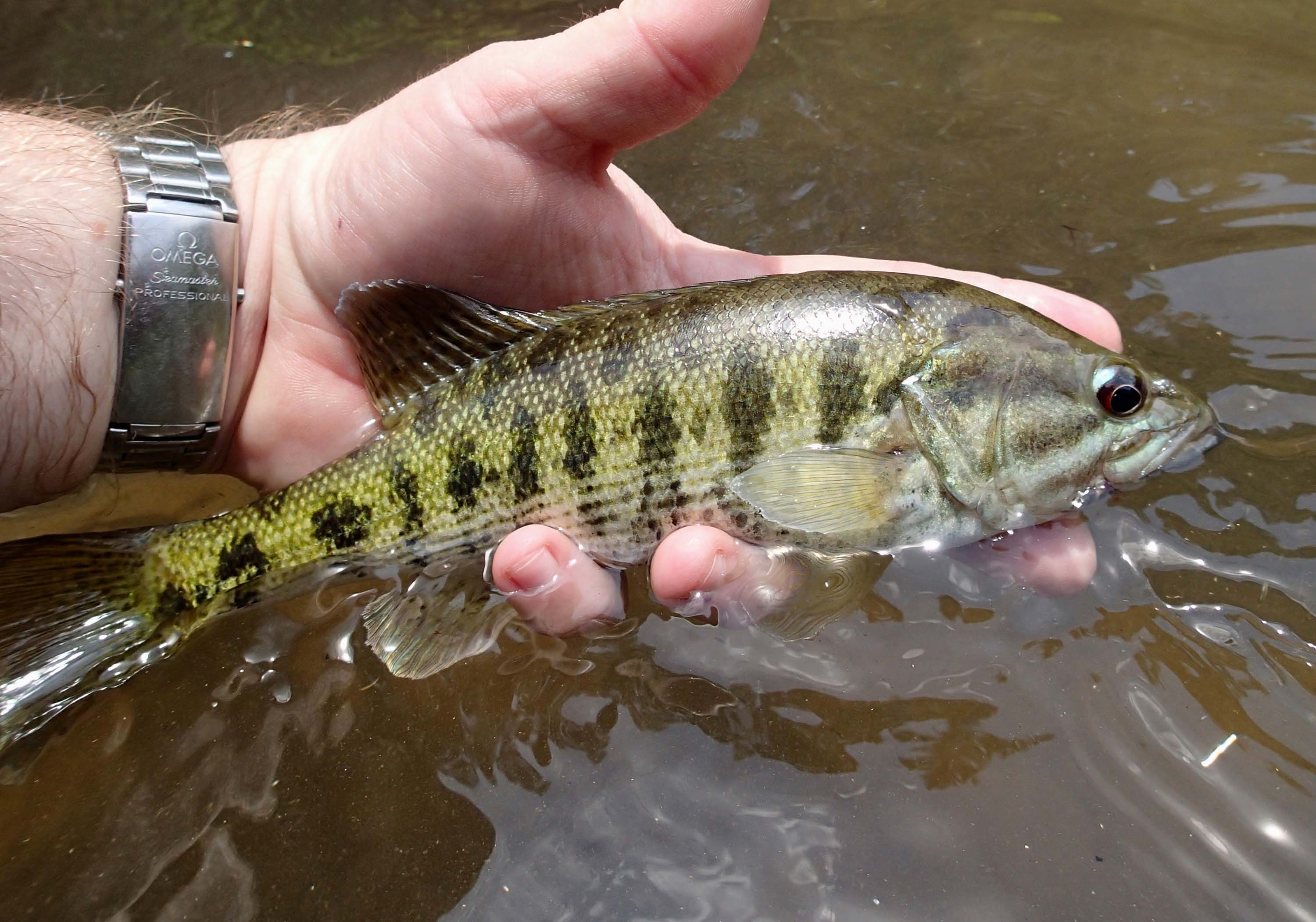Bartram's Bass
Bartram’s bass (and Altamaha bass) have striking coloration differences relative to the Mobile Basin and Chattahoochee redeye species. Bartram’s bass do not have any bright chromatic coloration in their fins but do have a small amount of salmon-orange coloration on the anterior distal edges of soft dorsal, anal, and caudal fins. This coloration is mostly present in juveniles and becomes less visible in adults. There is no spotting in the caudal fin. Their vertical blotches are very distinct and are prominent in both juveniles and adults.
These redeye bass can grow larger on average than the Mobile Basin species, but 13 or 14 inches seems to be the maximum. Currently there are no studies investigating length/age frequency in this proposed species. Unlike all other redeye bass species, Bartram’s bass can persist in lentic habitats such as reservoirs. It is unknown if the majority of these are hybrids or backcrossed individuals that give them this ability or if there is merely holdover populations persisting on the periphery from damming the Savannah River in the upper Savannah reservoirs.
South Carolina’s Department of Conservation and Natural Resources is doing a lot of work to conserve populations of native Bartram’s Bass from scientific research with collaboration with folks at Clemson University to education and awareness from their aquatic education coordinator, Will Mundhenke. South Carolina also recently rolled out their own black bass slam which includes the Bartram’s Bass. Check it out here.






